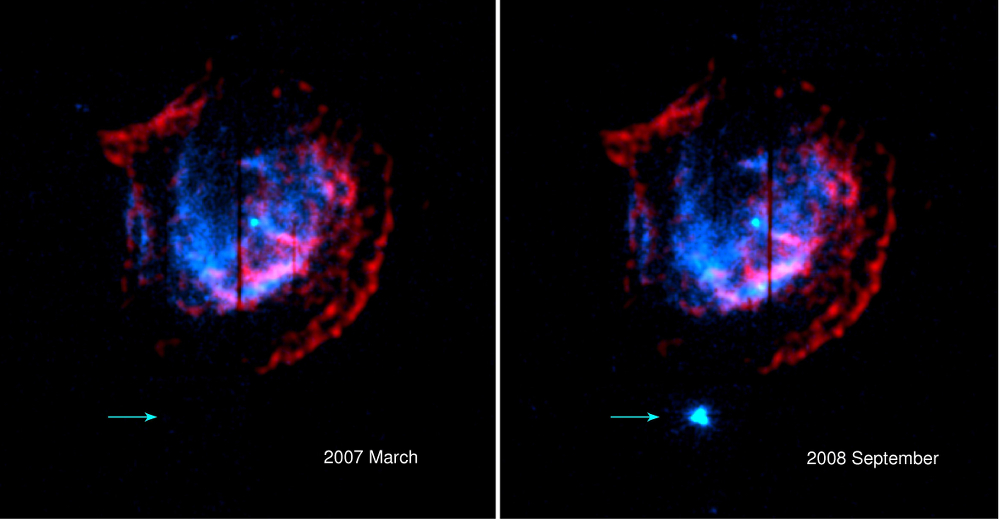
 Credit: COSPAR; Zhou et al. and ESA
Credit: COSPAR; Zhou et al. and ESA
New Supermagnet
As a massive star forms an iron core and dies, the core, as it collapses under its immense weight, concentrates its magnetic field and spins faster and faster, conserving angular momentum like a figure skater. The remnant core (if not too massive) will form a rapidly-spinning, highly magnetized neutron star. A small fraction of these newborn neutron stars have extraordinarily strong magnetic fields, millions of billions of times stronger than the magnetic field of the Sun (or hundred-trillion refrigerator magnets). These neutron stars are called magnetars. Magnetars spin rapidly (rotating once every 10 seconds or less) and this rapid rotation enhances the magnetic field. The magnetar's intense magnetic fields can generate intense bursts of X-rays and Gamma-rays. In fact, magnetars were first discovered as so-called Soft Gamma-ray Repeaters, or SGRs. Only about two dozen magnetars are known. The image above (a composite X-ray image from the XMM-Newton X-ray Observatory and a radio image in red from the VLA) shows the appearance of a bright source of X-rays (shown by the arrow) near a supernova remant called Kes 79. Astronomers have identified this source as a new magnetar, and estimate that the distance to the magnetar is about the same as the distance to the supernova remnant, which suggests that the magnetar is associated with the supernova remnant. While supernovae can produce both neutron stars and supernova remnants, Kes 79 already has a neutron star sitting at its center (as seen above). One explanation is that the star that exploded to form Kes 79 was a binary system in which an earlier explosion of the more massive component left a high-mass X-ray binary consisting of a magnetar orbiting a normal star. The supernova explosion of the second star could then have produced Kes 79 and thrown the magnetar out into space.
Published: April 28, 2014
<
HEA Dictionary ● Archive
● Search HEAPOW
● Other Languages
● HEAPOW on Facebook
● Download all Images
● Education ● HEAD
>

Each week the HEASARC
brings you new, exciting and beautiful images from X-ray and Gamma ray
astronomy. Check back each week and be sure to check out the HEAPOW archive!
Page Author: Dr. Michael F. Corcoran
Last modified Monday, 26-Feb-2024 17:24:13 EST


